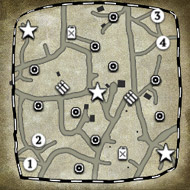I agree that the Panther needs to be looked at, it's underperforming: nevertheless against USA I'd rather get a Panther than a PIV.
But some of you guys are overreacting when it comes to lowering its fuel cost!
It should not be less than 155 fuel.
The panther is still better than a single T-34/85 which costs 140 fuel, and an M36 Jackson which costs 125 fuel. You can't just massively lower the panther's fuel cost without having to adjust all of the other tanks fuel costs accordingly, that would call for a massive patch like the one we had back in April.
I'd personally prefer a slight buff while keeping the current 175 fuel price, but then it might overlap too much with the Tiger making it a bit redundant. Or just reduce the price to around 160 fuel, that seems fair.
Cheers.
Profile of Frencho
General Information
Steam: 76561198005150044
Birthday: 1990-04-19
Residence: France
France
Nationality: France
France
Timezone: Europe/Paris
Steam: 76561198005150044
Birthday: 1990-04-19
Residence:
 France
FranceNationality:
 France
FranceTimezone: Europe/Paris
Livestreams
 |
|
|
14 | ||
 |
|
|
226 | ||
 |
|
|
20 | ||
 |
|
|
7 | ||
 |
|
|
4 | ||
 |
|
|
2 | ||
 |
|
|
1 |
Ladders Top 10
-
#Steam AliasWL%Streak
- 1.41662.870+14
- 2.659233.739+2
- 3.299158.654+3
- 4.286110.722-2
- 5.309114.730+5
- 6.12243.739-1
- 7.193100.659+3
- 8.10829.788+9
- 9.370283.567+3
- 10.1171650.643+2
Replay highlight
VS
-
 cblanco ★
cblanco ★ -
 보드카 중대
보드카 중대
-
 VonManteuffel
VonManteuffel -
 Heartless Jäger
Heartless Jäger

Einhoven Country


Honor it
13
Download
1315
Board Info
920 users are online:
920 guests
0 post in the last 24h
19 posts in the last week
45 posts in the last month
19 posts in the last week
45 posts in the last month
Registered members: 51669
Welcome our newest member, Wnukowskit
Most online: 2043 users on 29 Oct 2023, 01:04 AM
Welcome our newest member, Wnukowskit
Most online: 2043 users on 29 Oct 2023, 01:04 AM



 .
.




